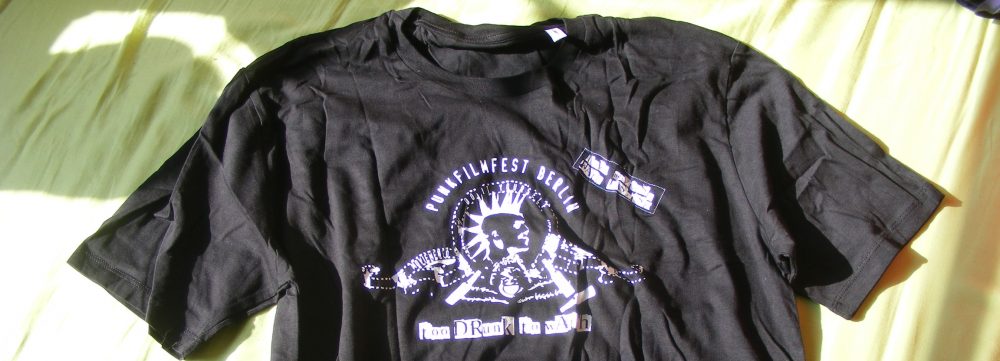The idea for „too much future“ – a documentary about punk in the GDR – was inevitable. On the one hand we’d been part of the GDR punk scene ourselves, on the other hand there had been no attempts until then to put this (our) story on the big screen in an authentic fashion. We were aware of the other works dealing with the subject and came up with our own conclusions.
The punk scene in, for example, New York was certainly different from the scene in East Berlin. But the late 70s/early 80s subcultural scene in East Berlin was full of confusion and drama, that would result in the same warped biographies, one finds everywhere among juveniles dealing in absolutes. All films and books about the scene in Western Europe (including West Germany) leave the history of punk in East Germany out, thereby preserving it as a subcultural phenomenon. We took this absence personal. We wanted to react to this general lack of knowledge about punk in the GDR. That resulted in manifold activities that were rooted in a dissatisfaction with aforementioned lack of interest. Apart from many publications the film was preluded by the extensive „too much future“ exhibtion that took place in Berlin in 2005.
Punk in the East was as versatile as punk in the West. The beginnings were an experiment and full of thrills. Some stories we unearthed during our research were almost unbelivevable. These stories served as the reason to dig deeper and to shed a light on this chapter of GDR history that was mostly hidden in the dark. Punk in the East was the child of a society of lack, and opposed the „dictatorship of the working class“. It was an expression of juvenile carelessness and happiness carried by the bravery of dilletants. There was no cultural alternative at work, only a joyful „being against it“. But the socialist state had no humour and oppressed the punks, first locking them out (of society) and then (in many cases) locking them in.
The history of punk in the GDR is unique because the state and it’s long arm, the ministry of state security, acted in a disproportional and massive way against people trying to break free. This would result in a variety of biographies, full of dramatic turns and twists and incidients that defy belief. During the preparations for the film, when we were looking for appropriate protagonists, we talked to many former punks and people still considering themselves as punks. We finally had to decide on a few. We aimed for a maximum of four people that were to represent the scene as much as themselves.
In the end we interviewed two women and four men, to settle with less turned out impossible. They had lived in Berlin, Leipzig and Dresden. They talk about different designs for life, portrait fractured biographies, that have punk in common, and how they had to deal with imprisonment ordered by the GDR authorities. To experience imprisonment for some didn’t even take to be actually imprisoned considering the presence of the wall. A unyfying factor for everyone was the fact that they had the guts to voice their dissent. Some expressed themselves through painting or starting a punk band, others would make Super 8 films. The film shows in an equally interesting way where the protagonists are standing today, with their lives, their professions, their political opinions and their punk.
ostPUNK!/too much future“ is trying to examine this complex topic in 90 minutes. The aim is not to educate but, according to the film’s subject, to show vitality and to entertain. The lucky situation to have found a dedicated distributor in the shape of „Neue Visionen“ is responsible for the film being shown in german movie theatres since the end of summer 2007, finally making this chapter of german subculture visible.
(Michael Boehlke in OX#72, june/july 07)
